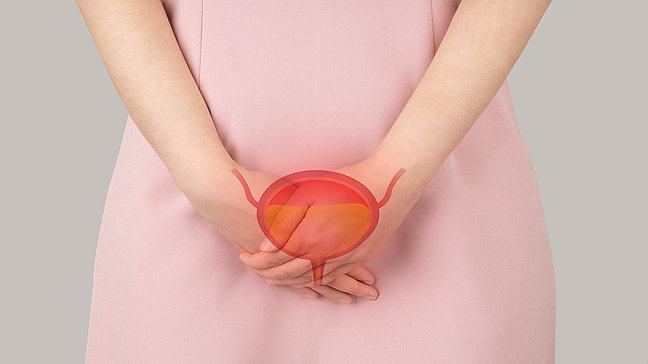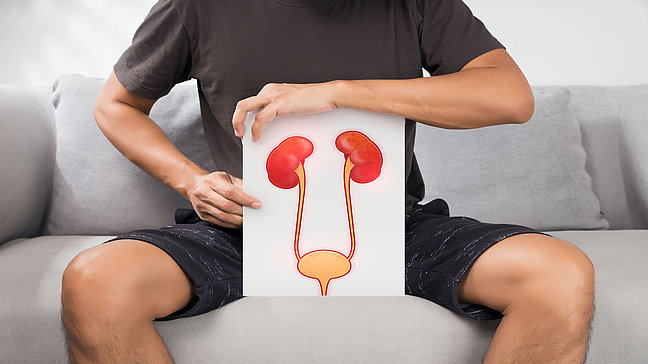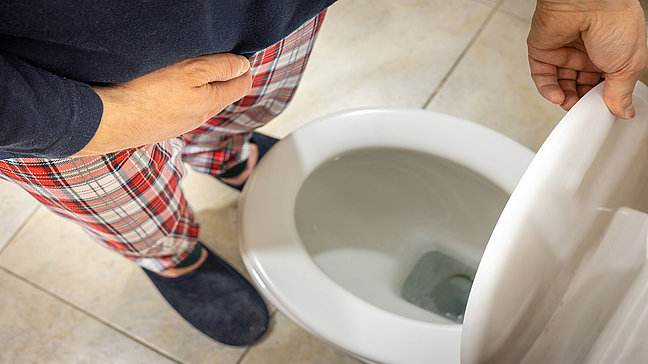
Urinary retention
Causes of Urinary Retention (Hydronephrosis)
The most common causes of urinary obstruction are:
- Kidney stones (Nephrolithiasis): Kidney stones can block the flow of urine, especially when they enter the ureter and obstruct it.
- Ureteral stricture: A narrowing of the ureter, often due to scar tissue, can hinder the flow of urine from the kidney.
- Tumors: Benign or malignant tumors in the kidney, bladder, or urinary tract can press on the ureters and block the flow of urine.
- Prostate enlargement (benign prostatic hyperplasia, BPH): An enlarged prostate can block the flow of urine, leading to a backup of urine into the kidneys.
- Pregnancy: The pressure of the growing uterus on the ureters can lead to urinary obstruction in pregnant women.
Symptoms of urinary retention (hydronephrosis)
- Pain in the lower back or side area (flank pain) that occurs suddenly or gradually worsens
- Nausea and vomiting
- Pain or difficulty urinating
- Frequent urination in small amounts
- Blood in the urine (hematuria)
- Fever and chills with simultaneous urinary tract infection
Diagnosis of urinary retention (hydronephrosis)
The diagnosis begins with a physical examination and a medical history assessment. The following diagnostic tests may be conducted:
- **Urinalysis**: To check for the presence of blood, bacteria, or other abnormalities in the urine.
- **Imaging procedures**: Ultrasound is the most common method for detecting urinary obstruction and kidney enlargement. Computed tomography (CT) or magnetic resonance imaging (MRI) can also be used to more accurately determine the cause of the obstruction.
- **Kidney function tests**: Blood tests to check kidney function can help determine how much the kidneys are affected by the urinary obstruction.
Treatment options for urinary obstruction (hydronephrosis)
The treatment depends on the underlying cause of the urinary obstruction:
- Removal of urinary stones: If urinary stones are the cause, they can be removed by shock wave lithotripsy (breaking up the stones with sound waves) or by an endoscopic surgery.
- Catheterization or drainage: In acute cases, a ureteral stenting or a nephrostomy (drainage through the skin) can be performed to restore urine flow and reduce pressure on the kidneys.
- Surgical correction: In cases of structural problems such as ureteral strictures or tumors, a surgical procedure may be necessary to resolve the blockage.
- Treatment of infections: If a urinary tract infection is present at the same time, treatment with antibiotics will be required.
Preventive measures for urinary retention (hydronephrosis)
There is no specific prevention for urinary retention, but early detection and treatment of urinary tract infections, kidney stones, and other underlying conditions can reduce the risk of urinary retention and kidney damage. Adequate fluid intake and a healthy lifestyle can help prevent kidney stones and other urinary tract diseases.
Common Patient Questions About Urinary Retention
Urinary obstruction occurs due to a blockage or narrowing in the urinary tract that hinders urine flow. Causes can include urinary stones, tumors, urethral strictures, prostate enlargement, pregnancy, or congenital malformations of the urinary tract. Inflammations or injuries can also lead to urinary obstruction.
Symptoms of urinary obstruction include pain in the flanks or lower back, reduced or absent urine output, frequent urination, nausea, fever, and general discomfort. In more severe cases, there may be visible blood in the urine and abdominal pain.
The diagnosis of urinary obstruction is usually made through a combination of physical examination and imaging techniques such as ultrasound, CT, or MRI. These methods allow for the identification of the location of the blockage and the degree of urinary obstruction. A urine and blood test can also help detect inflammation or kidney damage.
Yes, untreated urinary obstruction can lead to long-term kidney damage, as the backflow of urine impairs kidney function and can cause overstretching of the kidney tissue. This can lead to chronic kidney failure or irreversible kidney damage. Early treatment is therefore crucial to avoid such complications.
![[Translate to English:]](/fileadmin/_processed_/1/d/csm_UZ-Logo-2024-breit-aK-1500px-white-red_4b49b8d28c.png)


